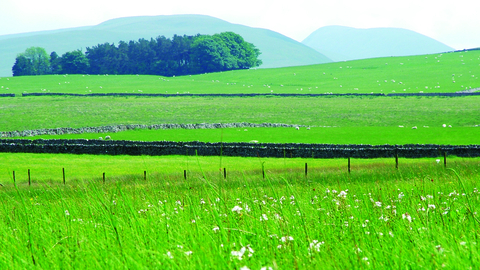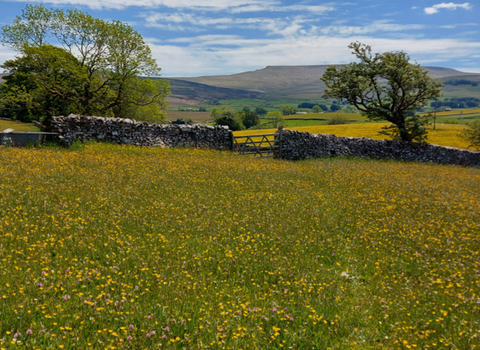
© Andrew Walter
Location
Know before you go
Dogs
Assistance dogs only
When to visit
Opening times
Open all year roundBest time to visit
April to JulyAbout the reserve
Wildlife highlights
-
Mallard, redshank, curlew, snipe, meadow pipit and skylark have all nested on the nature reserve and are frequently seen during the breeding season.
-
Teal and short-eared owl may be seen in winter.
- An assortment of attractive orchids including fragrant, early marsh and northern marsh brighten the limestone grassland in summer
- In spring curlew, skylark and other birds start to nest
- Summer is a great time for marsh orchid and bird's-eye primrose
- Visit towards dusk in autumn to catch the starling roost
Wide-ranging habitat
Taking its name from the stream that flows flows through the nature reserve, Tarn Sike has a wide range of habitats. This is due to the combined effect of the underlying peaty soils and limestone rock.
Areas of heath with Sphagnum moss, purple moor-grass and cross-leaved heath combine with lime-rich flushes containing cottongrass, black bog-rush, grass-of-Parnassus and bird’s-eye primrose.
You can also find bogbean, round-leaved sundew, butterwort, marsh marigold, meadowsweet and marsh cinquefoil. This is an excellent site for finding some quite uncommon sedges.
Invertebrates
The wealth of flowers attracts many butterflies including common blue, green-veined white and small heath. In addition, emperor and fox moths can be found.
From the lime-rich flushes we have records of 15 different species of snail. We suspect that there is quite a rich invertebrate fauna here but much more work is needed.
Other wildlife
Fox, hare, stoat and short-tailed vole have been seen on the nature reserve.
What makes Tarn Sike nature reserve so special?
Nationally important Tarn Sike is part of Sunbiggin Tarn and Moors SSSI, which is nationally important for its rich and varied flora and for its breeding birds.
Keeping it special
In order to maintain the diversity of habitats and species, the nature reserve is grazed between September and March.
The effects of this management are monitored via vegetation surveys and fixed-point photography.
Recent history
Tarn Sike was purchased in 1981 with the help of an anonymous donation.
Getting here
By car:
From M6 Junction 38 take the B6260 through Tebay to Orton. In Orton take the right turn signed for Raisebeck and follow the sign for Sunbiggin Tarn, Asby and Soulby. Follow this road until a cattle grid is crossed and the road becomes open fell. Tarn Sike is reached by following the boundary wall on the north side of the road for approx 300m.
By bicycle:
Tarn Sike nature reserve is on National Route 68 Walney to Wear.
By public transport:
Buses run from Kendal and Tebay to Orton.
Species
- Brown hare
- Stoat
- Marsh marigold
- Mallard
- Redshank
- Curlew
- Snipe
- Meadow pipit
- Skylark
- Teal
- Short-eared owl
- Common fragrant-orchid
- Round-leaved sundew
- Sphagnum moss
- Cross-leaved heath
- Common cotton-grass
- Grass-of-parnassus
- Bogbean
- Common butterwort
- Meadowsweet
- Marsh cinquefoil
- Common blue
- Small heath
- Emperor moth
- Fox moth
- Red fox
Habitat
Contact us
Environmental designation
Upcoming events at Tarn Sike Nature Reserve
If there are any upcoming events at Tarn Sike Nature Reserve we'll show them to you below

Support our conservation work on this nature reserve,
and protect Cumbria's wildlife & wild places.






